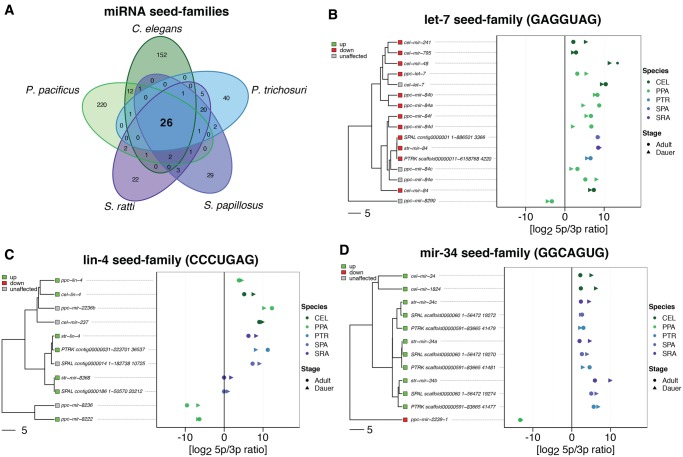Fig. 1.
—Comparative analysis of miRNA seed-families. (A) Venn diagram showing the number of miRNA seed families and their overlaps between the five nematodes species under study. (B–D) Phylogenetic trees based on multiple sequence alignments of all members of three miRNA seed-families (left) and arm preference (right) represented as ratio of reads derived from the 5p arm and the 3p arm of the miRNA precursor. The species are color coded, filled circles represent reads from libraries derived from adults, filled arrow heads represent reads from dauer/infective larvae derived libraries. The seed sequence is given in parentheses. (B) One example of a conserved seed family (present in all five species) that is consistently downregulated in dauer/infective larvae compared with adults (red squares). (C) One example for a conserved seed family that is consistently upregulated in dauer/infective larvae compared with adults (green squares). For the other conserved differentially expressed miRNAs see supplementary figure 7, Supplementary Material online. (D) The mir-34 seed family. Notice that P. pacificus mir-34 is differentially expressed in the opposite direction than the rest and its gene phylogeny is not in agreement with the species phylogeny, suggesting that it has acquired the seed by convergence.

